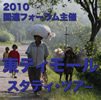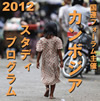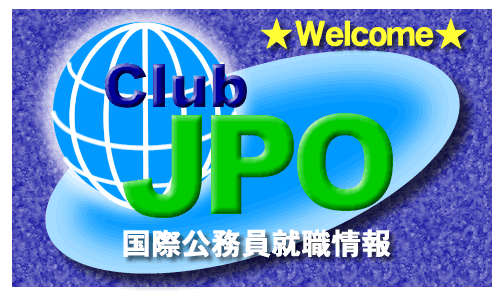
�K�⎖�Ƃ̏ڍׁF���A�l�Ԃ̈��S�ۏ����u�^�C�E���[�z���\�[���ɂ����鍂�n�����̑����I���W�v���Ƃ̊������e�ƌ��݂܂ł̐i���ɂ���
 ���A�l�Ԃ̈��S�ۏ����́A�����N��̊O���ȃz�[���y�[�W�̐����ɂ�����Ƃ���A���{���{�ƃR�t�B�E�A�i���O���A���������̃C�j�V�A�e�B�u�ɂ��A���A�����ǂɐݒu���ꂽ���A�̐M������ł��B1999�N�̐ݗ��ȗ��A���{����̗v���o�͖�400���~�A���E���Ŗ�200�����̎��Ƃ����{���A�L�͂��[���ȋ��Ђɂ��炳���l�X���R�~���j�e�B�E���x���Ŏx�����Ă��܂����B
���A�l�Ԃ̈��S�ۏ����́A�����N��̊O���ȃz�[���y�[�W�̐����ɂ�����Ƃ���A���{���{�ƃR�t�B�E�A�i���O���A���������̃C�j�V�A�e�B�u�ɂ��A���A�����ǂɐݒu���ꂽ���A�̐M������ł��B1999�N�̐ݗ��ȗ��A���{����̗v���o�͖�400���~�A���E���Ŗ�200�����̎��Ƃ����{���A�L�͂��[���ȋ��Ђɂ��炳���l�X���R�~���j�e�B�E���x���Ŏx�����Ă��܂����B
�u�^�C�E���[�z���\�[���ɂ����鍂�n�����̑����I���W�v���Ƃ͓�������x�������^�̎��Ƃ̈�ł���A2010�N1��12������3�N�Ԃ̗\��ŁA�H�Ɣ_�Ƌ@�ցiFAO�j�𒆐S�Ƃ��Ď���8�̍��A�@�ւ������ł��̎��{�ɓ������Ă��܂��B��̓I�ɂ́A�^�C�ōł��n�����ƌ����郁�[�z���\�[�����ɂāA�T�v���̂悤�Ȋ������s�Ȃ��Ă��܂��B
- �����\�ȑ����I���n�_�Ƃ̂��߂ɑΏۃO���[�v�̔\�͋������s���A�����n�o��ƂɎ��g�ނ���
- �Z�p�x���A�P���y�ѕ����̋��^��ʂ��āA����V�R�����̊Ǘ��v����{�̂��߂̎x�����s������
- ���ׂĂ̐l�X�A���ɉ��u�n�ɋ��Z���鏭���E�����ɁA�t�H�[�}���E�m���t�H�[�}���������A�A�w���E�o�ȗ��E�C���������コ���邱��
- �w�Z�̃J���L�������⋳�ނ̉����A�y�ы��t�̔\�͋�����}�邱��
- ��b�I��Ë@�ނ̒A�e�ߒ��ւ̖K���Â��܂ވړ����f�Ï���ʂ����A�E�g���[�`�����̑��i�A���u�n�R�~���j�e�B�̐f�Ï��ɂ�����ꎟ��Â̒A�\���ȃT�[�r�X���Ă��Ȃ��Z���ɑ���ی��T�[�r�X�̒̂��߂̈�Ï]���Ҕh�����x�̋���
- �w�Z�ĕ҂̊g���A���H�v���O�����y�юq�ǂ��̐����̃��j�^�����O���A�w�Z�ی��v���O�����̒��Ŏ��{���A�q���̉h�{��Ԃ����P���邱��
- �_�Y�H�i�J���A�}�[�P�e�B���O�A�u�����f�B���O�y�уG�R�c�[���Y���J�����x�����A�n���̌ٗp�E������n�o���邱�� �G �ڏZ�ҁE��s�����琶�܂ꂽ���c���̏o���͂̒�o�𑣐i���A�Љ���E��ÃT�[�r�X��������ł��錠����n�o���邱��
�����Ɋւ��ē��{��ł̍L���͓��ɂ���܂��A2011�N10�����_�Ŏ��̎������{���\�ł��B2�ڂ�3�ڂ�PDF���ނő啔�����ɋZ�p�I�Ȃ��̂ł����A �v���W�F�N�g�𗝉������ł͏d�v�ȏ��ނƌ����܂��B
- 2009�N10��13���t�O���ȃv���X�����[�X�ւ̃����N
- 2009�N10��13���ɍ��A�����ǂɏ��F���ꂽ�\�Z�Ă��܂ލŏI�̎��ƕ����iProject Document�jPDF 918KB
- 2011�N3��11���t��2010�N�����Ɛi�����iAnnual Progress Report�jPDF 9MB
��L�̂����A�ŏI�̎��ƕ����́u�T�v�v�iExecutive Summary�j�ƁA2010�N�����Ɛi�����̓������u�T�v�v���ȉ��Ɉ��p���܂��B���݂̂Ƃ���p��ł����A������s�ψ���ɂĘa���ւ̖|����������܂��B���Q�l�ɂ��Ē�����K���ł��B
���F���ꂽ���ƕ����́u���ƊT�v�v����
 Mae Hong Son province is a remote and mountainous province located in northern Thailand and shares a fairly long border with the Union of Myanmar. Although it is not densely populated, the hilly terrain and difficulty of access together with other infrastructural constraints poses an immense challenge to development efforts and attempts in improving the livelihoods of the people. Poverty incidence is high and the situation is compounded by the presence of different ethnic groups with its own distinctive language and customs including a significant migrant, local ethnic minorities, and refugee1 population, many with little if any access to social services. As a result, Mae Hong Son was ranked the lowest among all the provinces in Thailand in the Human Achievement Index in the National Human Development Report of 2007.
Mae Hong Son province is a remote and mountainous province located in northern Thailand and shares a fairly long border with the Union of Myanmar. Although it is not densely populated, the hilly terrain and difficulty of access together with other infrastructural constraints poses an immense challenge to development efforts and attempts in improving the livelihoods of the people. Poverty incidence is high and the situation is compounded by the presence of different ethnic groups with its own distinctive language and customs including a significant migrant, local ethnic minorities, and refugee1 population, many with little if any access to social services. As a result, Mae Hong Son was ranked the lowest among all the provinces in Thailand in the Human Achievement Index in the National Human Development Report of 2007.
This Programme was therefore developed in response to the human security needs and priorities of the province as indicated in various reports and assessments over the past decade. It aims to improve the quality of life and reduce poverty among the vulnerable groups in underserved areas of Mae Hong Son through enhancing both protection and empowerment capacities. This will be carried out through a three-pronged approach of improving the skills and therefore income generating capability of the target groups (remote poor farmers, ethnic minorities, migrants and camp-based refugees); sustainable management of natural resources and increasing the opportunities in accessing social services such as health and education for the vulnerable populace.
 The Programme represents a pioneering initiative of bringing together the wealth of diverse development-oriented expertise from almost a dozen UN agencies and joining hands with an equal if not more number of Thai agencies and partners in a collective effort to address the multi- faceted developmental challenges facing Mae Hong Son. It will be a test of joint commitment, resolve and solidarity, integrated, multi-disciplinary and inter-agency collaboration and the spirit of goodwill and mutual assistance. If successful in its achievements, this Programme could perhaps be a model for UN joint programming and implementation in other locations.
The Programme represents a pioneering initiative of bringing together the wealth of diverse development-oriented expertise from almost a dozen UN agencies and joining hands with an equal if not more number of Thai agencies and partners in a collective effort to address the multi- faceted developmental challenges facing Mae Hong Son. It will be a test of joint commitment, resolve and solidarity, integrated, multi-disciplinary and inter-agency collaboration and the spirit of goodwill and mutual assistance. If successful in its achievements, this Programme could perhaps be a model for UN joint programming and implementation in other locations.
2010�N�����Ɛi�����́u�T�v�v����
 The United Nations (UN) Joint Programme on Integrated Highland Livelihood Development in Mae Hong Son (MHS) was officially launched during the Preamble Signing Ceremony held in the capital of MHS province on 12 January 2010. At the ceremony, all the participating UN agencies, together with UN Resident Coordinator and MHS Governor, signed the cover page of the Programme Document, formalized their commitments, and pledged to achieve human security goals in MHS through the Joint Programme.
The United Nations (UN) Joint Programme on Integrated Highland Livelihood Development in Mae Hong Son (MHS) was officially launched during the Preamble Signing Ceremony held in the capital of MHS province on 12 January 2010. At the ceremony, all the participating UN agencies, together with UN Resident Coordinator and MHS Governor, signed the cover page of the Programme Document, formalized their commitments, and pledged to achieve human security goals in MHS through the Joint Programme.
Subsequently, at the request of the Sub�]Thematic Working Group on Livelihoods, MHS Governor designated Output�]level provincial lead agencies that act as the immediate government counterparts for the UN agencies, and proposed priority programme implementation sites, or Common Working Areas (CWAs), where all the UN agencies, the provincial counterparts, and Implementing Partners (IPs) will concentrate their efforts and activities to maximize the synergy of the programme and increase its impact on the livelihoods of target beneficiaries who are underserved and vulnerable, in particular poor farmers, migrants, ethnic minorities, and displaced persons residing near the national border.
 The inception phase – from February through April 2010 – started with the arrival of Programme Manager, followed by a series of field missions by the executing UN agencies in order to finalise draft Annual Work Plan 2010�]12. As a result, the work plan was approved by the Provincial Steering Committee (PSC) at its first meeting convened in April 2010. The PSC, which consists of the UN Team, the Provincial Task Force, IPs, and the Programme Management Unit, also approved the Common Operational Guidelines and the External Communication Strategy as tools for all the stakeholders to work together and jointly produce eleven Outputs under three different programme’s Objectives to improve the quality of life and reduce poverty amongst the vulnerable groups in underserved areas of MHS.
The inception phase – from February through April 2010 – started with the arrival of Programme Manager, followed by a series of field missions by the executing UN agencies in order to finalise draft Annual Work Plan 2010�]12. As a result, the work plan was approved by the Provincial Steering Committee (PSC) at its first meeting convened in April 2010. The PSC, which consists of the UN Team, the Provincial Task Force, IPs, and the Programme Management Unit, also approved the Common Operational Guidelines and the External Communication Strategy as tools for all the stakeholders to work together and jointly produce eleven Outputs under three different programme’s Objectives to improve the quality of life and reduce poverty amongst the vulnerable groups in underserved areas of MHS.
 In addition, the inception period allowed the UN Team to bring the MHS Government as an equal partner for the programme implementation, enhance collaboration with the provincial counterparts at each Output�]level, find out specific development assistance needs and gaps to fill, and finalise the selection of two CWAs – i.e. Mok Chum Pae and Tham Lod sub�]districts, or tambons (in Thai). The two CWAs were approved by the PSC together with additional CWAs for each Objective, namely, Mae Suad and Muang Pon sub�]districts to achieve Objective 1, Mae Suad and Mae Yuam sub�]districts for Objective 2, and Sao Hin and Mae La Noi sub�]districts for Objective 3.
In addition, the inception period allowed the UN Team to bring the MHS Government as an equal partner for the programme implementation, enhance collaboration with the provincial counterparts at each Output�]level, find out specific development assistance needs and gaps to fill, and finalise the selection of two CWAs – i.e. Mok Chum Pae and Tham Lod sub�]districts, or tambons (in Thai). The two CWAs were approved by the PSC together with additional CWAs for each Objective, namely, Mae Suad and Muang Pon sub�]districts to achieve Objective 1, Mae Suad and Mae Yuam sub�]districts for Objective 2, and Sao Hin and Mae La Noi sub�]districts for Objective 3.
As an immediate follow�]up to the First PSC Meeting, a Rapid Village Appraisal (RVA) was carried out in Mok Chum Pae and Tham Lod jointly by the MHS Government, UN Team, and sub�]district governments in May and June 2010. The RVA selected 8 priority villages in the CWAs, which were endorsed by the MHS Governor and the UN Team in July 2010. Similarly, in September 2010, seven villages were selected in the additional CWAs to be supported under Objective 3.
 Furthermore, based on the outcome of the RVA, the MHS Government and the UN agencies involved in Objectives 1 and 2 conducted a Participatory Rural Appraisal (PRA) in the eight priority villages in August through October 2010 in order to identify constraints, opportunities, capacity building needs, and potential interventions and to help determine detailed activities to be conducted in the villages. Preliminary results of the PRA were released in November 2010, based on which the UN agencies concerned began to develop a detailed village�]level action plan in December 2010.
Furthermore, based on the outcome of the RVA, the MHS Government and the UN agencies involved in Objectives 1 and 2 conducted a Participatory Rural Appraisal (PRA) in the eight priority villages in August through October 2010 in order to identify constraints, opportunities, capacity building needs, and potential interventions and to help determine detailed activities to be conducted in the villages. Preliminary results of the PRA were released in November 2010, based on which the UN agencies concerned began to develop a detailed village�]level action plan in December 2010.
To complement the PRA findings and identify more detailed beneficiaries’ needs as well as potential areas for interventions specific to agro�]processing and marketing, eco�]tourism, sustainable natural resources management, and renewable energy, Output 1.2, Output 1.3 and Output 2.1 groups started to prepare baseline studies on their respective thematic areas. An Objective 3�]wide baseline survey was also planned with the Provincial Office as the coordination body and in close collaboration with the provincial lead agencies concerned with Objective 3 for the coordination, implementation, management, and monitoring of the survey.




